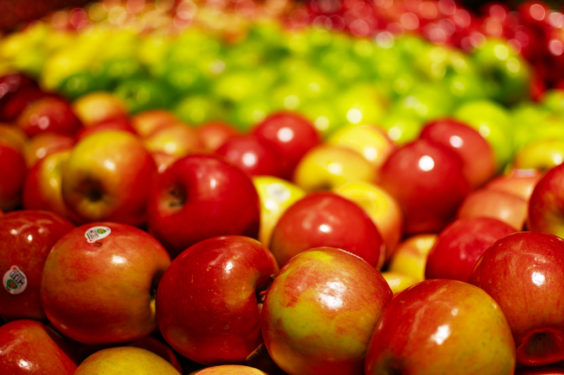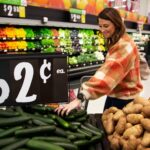
Couponers have long complained that it’s easy to save money on packaged products, but it’s hard to save on fresh food. There are just not very many coupons, or rock-bottom sale prices, for meat and produce. But retailers may need to take a hard look at lower prices – because shoppers are demanding it.
A new report says Americans want their fresh food to be cheap, and convenient. According to the Nielsen Global Survey of Fresh Foods, “good value” and “convenient” are the attributes most valued by shoppers – even more than “fresh selection” – across most categories of fresh food. Overall, more than half of shoppers surveyed said rising food prices affect their purchasing of fresh foods. If you can combine coupons and sales and stock up on canned veggies or frozen chicken nuggets for next to nothing, who needs to shop the produce or meat departments at all?
That is, of course, worrisome to health advocates. “The playing field needs to be leveled in terms of pricing,” the New York Times’ Michael Moss, author of the book “Salt Sugar Fat: How the Food Giants Hooked Us”, tells Time magazine. “We all know we should be eating more fresh vegetables and fresh fruits,” he goes on. But when “you see that blueberries cost $5 for a little basket” compared with lower-priced “power bars and seemingly healthy things that are in fact loaded with salt, sugar and fat,” many shoppers make their decision based on cost, not nutrition.
Grocery stores have long emphasized quality over pricing when it comes to their fresh food offerings. Quality costs more, they argue. But many price-conscious shoppers are now dividing their shopping trips – getting packaged food deals at their supermarket, and turning to discounters like Aldi for their fresh food.
Then there’s Walmart, which promises lower prices on everything. But what exactly are you getting for your money there? In a public smackdown of Walmart’s “everyday low prices” approach, Milwaukee-based grocery chain Pick n’ Save criticized the quality of Walmart’s fresh food in an ad campaign, arguing that “price isn’t everything” (read: “The Walmart Challenge: A Competitor Fights Back”).
But Walmart wants to change that perception. Last month, it announced that its “healthier food initiative” has saved customers $2.3 billion on fresh fruits and vegetables over the past two years. Walmart U.S. CEO Bill Simon described efforts to “improve the quality and assortment in our fresh meat department” and to offer better selection and lower prices in produce. “We believe we’ve converted many customers to these areas of the store and will continue to generate loyalty in the important traffic-driving areas.”
As a result, Nielsen predicts grocery stores’ share of the fresh food market will decline one percentage point to 64% within three years, while supercenters and warehouse clubs’ share will rise a combined 3%, to 27% overall. “Savvy retailers understand that consumers want the option to choose fresh foods anywhere,” the report reads. And with fresh food accounting for nearly 30% of total store sales, losing that business to discounters could be a big hit to grocery stores’ bottom line.
When it comes to fresh food pricing, though, there’s only so much retailers can do. “Price fluctuations for fresh products are driven mainly by supply and demand factors, with weather conditions, seasonality changes, and cultural habits chief issues,” the Nielsen report reads. But it urges retailers to learn where to draw the line on price. “Understanding where consumers are quick to go for a lower priced option, and where they are willing to trade up because they perceive the value to be worth it, is critically important,” the report concludes.
Otherwise, more shoppers will continue to feed their family power bars, while that $5 basket of blueberries languishes on the shelf – overpriced, and untouched.











Fresh produce is an important aspect of grocery shopping for me. So much so that I have begun to grow my own. (No, it isn’t cost that makes me do that. It’s freshness and FLAVOR.}
Pet peeve #1 has to be beautiful produce w/ absolutely zero flavor. Worst offenders are strawberries and tomatoes. Other than that-pretty much anything from California. I’m in Texas and we get all the flavorless food here-I dunno why.
#2 is freshness. My local grocery has the wierdest policy w/ regard to produce. They put the ugliest, oldest, moldiest and yukkiest produce they can find on the shelves (on the top of the pile) and leave it there for weeks. (they are probably wondering why it doesn’t sell. Clueless.) Not only that but they have their produce clerks stand IN FRONT OF THE DISPLAYS cutting off the rotten parts and then placing the produce back on top of the stack. Nuts, totally nuts.
(But then again, when the ‘pink slime’ bru-ha-ha broke, they posted a public notice on their website calling their customers ignorant and uninformed. (LOL Sounds like JCP. LOL) So, as you can see this grocer has a track record of being unable to differntiate between ‘appealing’ and ‘edible’. Two VASTLY differient concepts. ~sigh.)